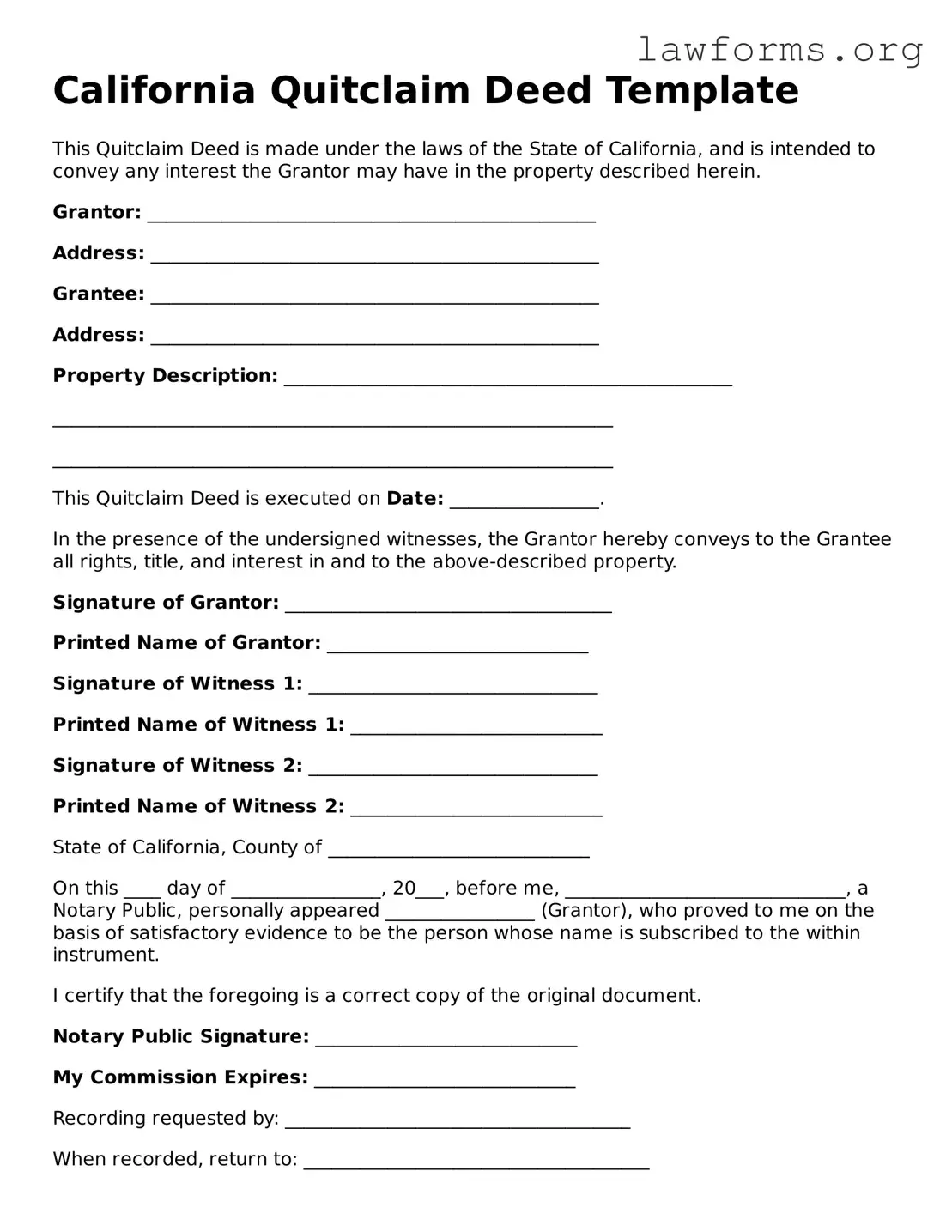California Quitclaim Deed Template
This Quitclaim Deed is made under the laws of the State of California, and is intended to convey any interest the Grantor may have in the property described herein.
Grantor: ________________________________________________
Address: ________________________________________________
Grantee: ________________________________________________
Address: ________________________________________________
Property Description: ________________________________________________
____________________________________________________________
____________________________________________________________
This Quitclaim Deed is executed on Date: ________________.
In the presence of the undersigned witnesses, the Grantor hereby conveys to the Grantee all rights, title, and interest in and to the above-described property.
Signature of Grantor: ___________________________________
Printed Name of Grantor: ____________________________
Signature of Witness 1: _______________________________
Printed Name of Witness 1: ___________________________
Signature of Witness 2: _______________________________
Printed Name of Witness 2: ___________________________
State of California, County of ____________________________
On this ____ day of ________________, 20___, before me, ______________________________, a Notary Public, personally appeared ________________ (Grantor), who proved to me on the basis of satisfactory evidence to be the person whose name is subscribed to the within instrument.
I certify that the foregoing is a correct copy of the original document.
Notary Public Signature: ____________________________
My Commission Expires: ____________________________
Recording requested by: _____________________________________
When recorded, return to: _____________________________________
